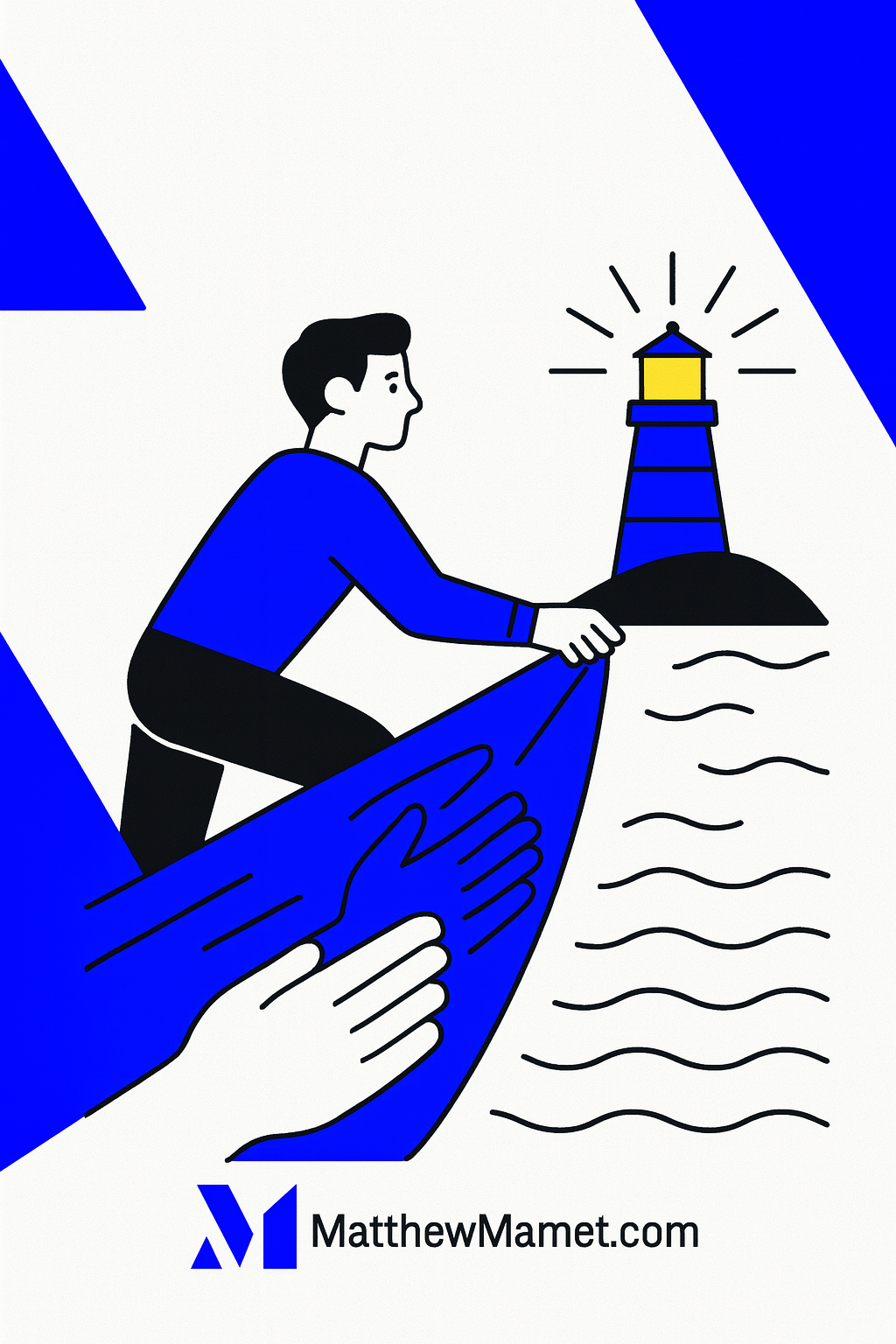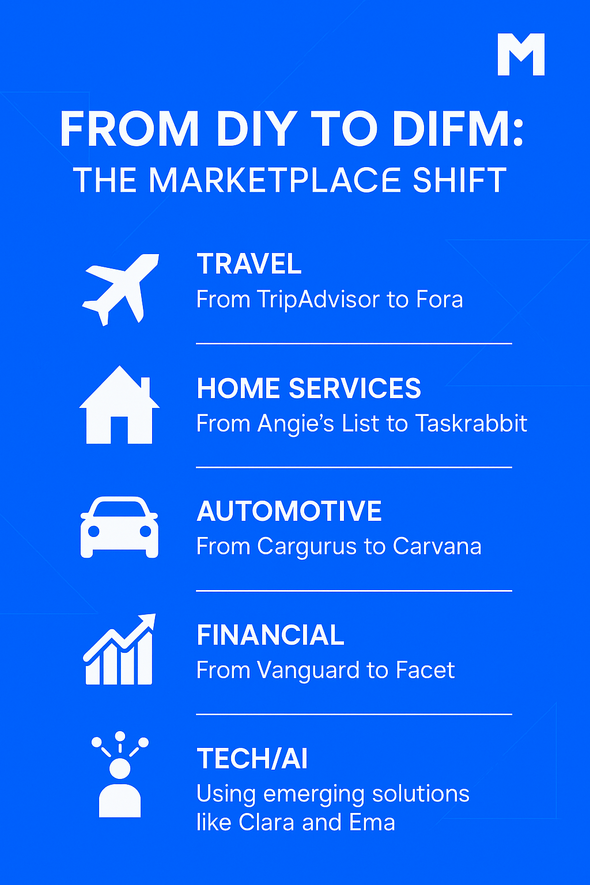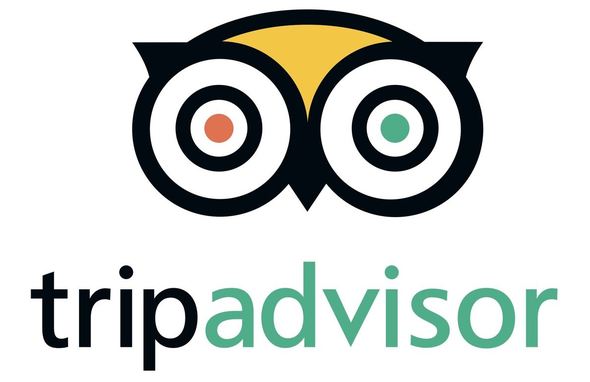Table of Contents
The Real Work Starts After Payment
What Is the Marketplace Concierge Layer?
Where Post-Purchase “Concierge” Wins (and Blows Up)
Marketplace Post-Purchase Concierges - What Works and What Doesn’t
How This Shows Up - In the Trenches
Building (and Testing) Your Marketplace Concierge
Marketplaces aren’t just about buying and selling anymore. The big wins - and the subtle traps - are happening after the transaction is done. Here’s why post-purchase experiences and “concierge” layers are where the next leg of real growth gets built.
Remember When Marketplaces “Ended” at Checkout?
A few years back, if you bought something from an online marketplace, that was it. The money moved, you got your order confirmation, and the marketplace’s job was done. Any follow-up - delivery snafus, installation, upsells, buyer regret - was mostly your mess to sort out. If you’re old enough to have ordered tickets, a handyman, or even a couch from Craigslist, you know that feeling. Once you paid, the platform disappeared.
Here’s the tension: as more of our work and life happens through marketplaces, expectations have flipped. Customers don’t want to fend for themselves if something’s off, or if the product or service could honestly be 20% better with a nudge in the right direction - especially after they’ve opened their wallets. Companies that figure out how to “stick around” and actually help, post-purchase, are eating the lunches of the ones who don’t.
The Real Work Starts After Payment
Shoppers - especially in high-value and service marketplaces - care more about outcomes than transactions. Getting the product is one thing. But what if it doesn’t fit your space? What if it needs assembly, warranty follow-up, or extra setup time? What should happen if a booking falls through, or if you’re not even sure what your next right step actually is?
- The anxiety gap between payment and satisfaction is where deals get won, lost, or multiplied.
- Referral loops, stickiness, and LTV are built here, not at the homepage.
- Most CX teams don’t touch it, and most product organizations ignore it.
The market’s moved. For years, the only real “aftercare” was a curt customer support form (if that), a trust-and-safety script, or a survey. That’s not enough. Take Airbnb’s rollout of 24/7 support, or platforms like Thumbtack and Angie’s diving deep into post-purchase project management. On-demand services nailed delivery, then realized the real churn-killer is helping with troubleshooting or the “what now?” moment.
Ready to drive more growth & achieve bigger impact?
Leverage my 25+ years of successes and failures to unlock your growth and achieve results you never thought possible.
Get StartedWhat Is the Marketplace Concierge Layer?
Think of the concierge as a set of rails that show up after a purchase, specifically designed to handle what most users usually muddle through alone. Sometimes it’s a human touch - a call or live chat for help with assembly or returns. More often, it’s rooted in software: guided workflows, checklists, reminders, post-purchase offers, even automated rebooking or upgrades.
Done well, it’s not “support.” It’s forward-looking:
- Making next steps brainless (or even invisible)
- Preemptively solving high-friction moments (“reschedule,” “cancel,” “add on,” “rate your pro”)
- Routing customers (and supply partners) to best-fit outcomes, not just putting out fires
Why does this matter? Because in marketplaces, supply and demand rarely fit together perfectly the first time. The edge cases are endless. Concierge layers are where operational scale meets actual customer outcome: smooth, rapid, context-aware.
Move over, generic “customer success.” The best platforms now deliver outcome success.
I’ve watched founders overcomplicate this - hiring account managers to paper over product gaps, bolting on clunky chatbots, or making users dig through help centers. But the fastest-growing companies I’ve advised start smaller and sharper. They identify the highest-leverage post-purchase pain points and build just enough “concierge” to grease those gears first. The rest is optional.
Want to see a real example of outcome-focused, post-purchase thinking? Check a few concrete takeaways from marketplaces shifting from DIY to done-for-me.
Where Post-Purchase “Concierge” Wins (and Blows Up)
The opportunities in post-purchase aren’t theoretical. I see them all day in my work with product and growth execs:
1. High-ticket service platforms: Book a contractor, designer, or wedding vendor online? The anxiety after “submit payment” is massive. The marketplaces that stay close - providing project timelines, reminders, or even just “Are you ready for your big day?” nudges - grab far more retention and referrals.
2. Experience and knowledge gaps: Products and services that should lead to something new, but users don’t know what’s possible next, or feel uncertain about value. Hand-holding here turns buyers into advocates. Think onboarding, but for real life, not just app features.
3. Managing exceptions: What happens when supply can’t deliver, or demand changes their mind? Most platforms try to delete the mess quietly. Smart ones step in proactively and sometimes even salvage trust (e.g., swift rebooking, surprise credits, white-glove install help).
On the flip side, getting this wrong can get expensive - fast. Endless optionality (“Do you want fries with that? How about insurance? Or a donation?”) turns into noise and kills conversion. Poorly timed outreach feels like spam, not service. Building too much process, too soon, forces everyone into unnecessary steps. The art is in knowing where the nightmare is most common for your users and fixing that spot first.
Ready to drive more growth & achieve bigger impact?
Leverage my 25+ years of successes and failures to unlock your growth and achieve results you never thought possible.
Get StartedCurious how post-purchase “help” can be a silent killer - or lifeline - for customer satisfaction? This framing gets explored from a product strategy perspective here.
Marketplace Post-Purchase Concierges - What Works and What Doesn’t
| Area/Approach | Effective Concierge | Typical Failure Mode | Why It Matters |
|---|---|---|---|
| High-Value Service Bookings | Timeline guides, proactive reminders | “Set and forget” (nothing until disaster hits) | Trust, higher LTV, word-of-mouth |
| Product/Knowledge Gaps | Next-step checklists, upgrade offers | Post-purchase surveys, upsell spam, confusing help docs | Drives actual product use and add-ons |
| Managing Exceptions | Automated rebook, live support, credits | Delays, “it’s not our problem,” endless forms | Reputation, future conversion |
| Low-Touch Commodity Transactions | Fast delivery confirmations, SMS updates | Overcomplicated tracking, irrelevant messaging | Keeps it simple, removes confusion |
| White-Glove/Install Help | Opt-in assembly, integrated scheduling | User left to chase their own vendors or support | Offloads work, builds brand affinity |
Ready to drive more growth & achieve bigger impact?
Leverage my 25+ years of successes and failures to unlock your growth and achieve results you never thought possible.
Get StartedHow This Shows Up - In the Trenches
In coaching and product strategy sessions, I see leaders underestimate the cost of post-purchase friction. The thinking is: “We’ve already got their money, it’s over.” Reality check: this is where the customer starts evaluating whether to come back (and whether to trash you to their friends).
The worst repeat offender? Building for transaction velocity, then watching NPS and trust tank because every “outside the script” case gets ugly. Product and R&D leads feel it as support escalations and slow-moving tickets. Growth feels it as churn, weak review velocity, and limp referrals.
Contrast this with a leadership team I worked with at a marketplace for home energy services. They obsessed over pre-purchase flows at first, but when growth slowed, they dug into reviews. Nearly every complaint was about the gap between payment and real results: scheduling misfires, bad handoffs, zero proactive updates. Shipping a simple concierge layer - both automation and opt-in human help - reversed their decline in months, not years.
Want to go deeper on how to bridge these product-to-service handoffs the right way? Check this story on sustaining momentum in product teams.
Building (and Testing) Your Marketplace Concierge
Here’s how I push execs to think - and act - on this:
1. Map Actual Pain, Not Guesswork
Look at your support logs, refund requests, and lowest-NPS cohorts. Where do users drop off, panic, or ask the same dumb questions a dozen times? Don’t build for every edge case. Start small: one huge friction point, one fix.
2. Decide: Human, Automated, or Hybrid?
Will a live human or a slick workflow beat the “ugh” moment for your highest-value use case? How can you deliver it without killing margins? Example: A “call us now” button might be optional for big-spender customers, but a single automated text update can handle 90% of anxieties for everyone else.
3. Make It Easy to Exit or Escalate
The best concierge layers aren’t traps. Users can resolve things fast or escalate whenever needed. No dark patterns, and no defending systems at the user’s expense.
4. Keep It Out of the Way (Except When Needed) Great platforms don’t blast everyone with popups. Context is everything. If someone’s on cruise control, let them be; only intervene where the likelihood of confusion or error is real.
5. Test, Learn, Adjust
Don’t make it a side project. Tie post-purchase experience metrics to actual product and growth KPIs. Run fast experiments. Drop what doesn’t work.
Ready to drive more growth & achieve bigger impact?
Leverage my 25+ years of successes and failures to unlock your growth and achieve results you never thought possible.
Get StartedWhy This Isn’t Optional Anymore
The real reason this matters? Every marketplace is getting better at top-of-funnel plays: trust badges, slick search, faster checkout. That’s table stakes. But the stuff nobody wants to handle - the coordination, rescheduling, “what now?” mess - drives who wins and who fades.
Strong post-purchase concierges create new growth levers:
- Higher repeat rates - even in commoditized markets
- Better reviews and word-of-mouth
- Lower support costs, because you’re not fighting fires; you’re preventing them
- More opportunities for smart, targeted upsell or cross-sell (not spam)
Weakness post-purchase doesn’t just cost you today’s customer. It poisons your brand for next time.
If you’re not thinking about how your product org and ops team support outcomes, not just transactions, it’s probably time for a reset. Want a refresher on navigating ambiguity when the ground is shifting? Read this practical guide for leaders in motion.
The Takeaway
No one remembers a friction-free checkout; everyone remembers a friction-free resolution when something went sideways, or the feeling of belonging because someone had their back after the sale.
The future of marketplaces? It’s not about endless new features. It’s about who earns repeat trust - one invisible (but brutally important) post-purchase moment at a time.
What’s your most neglected post-purchase problem - and what’s stopping you from testing a smarter concierge for it this quarter? Start there. The next leg of your growth probably does, too.
Ready to drive more growth & achieve bigger impact?
Leverage my 25+ years of successes and failures to unlock your growth and achieve results you never thought possible.
Get Started



